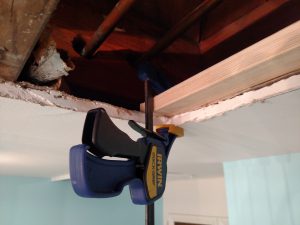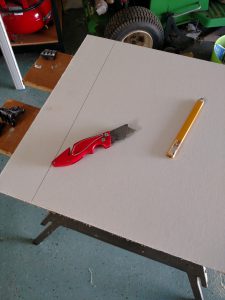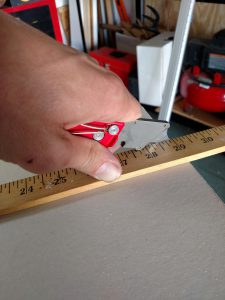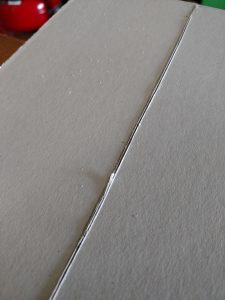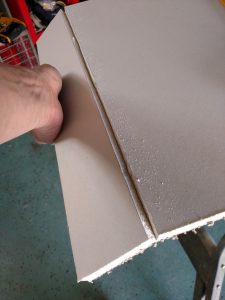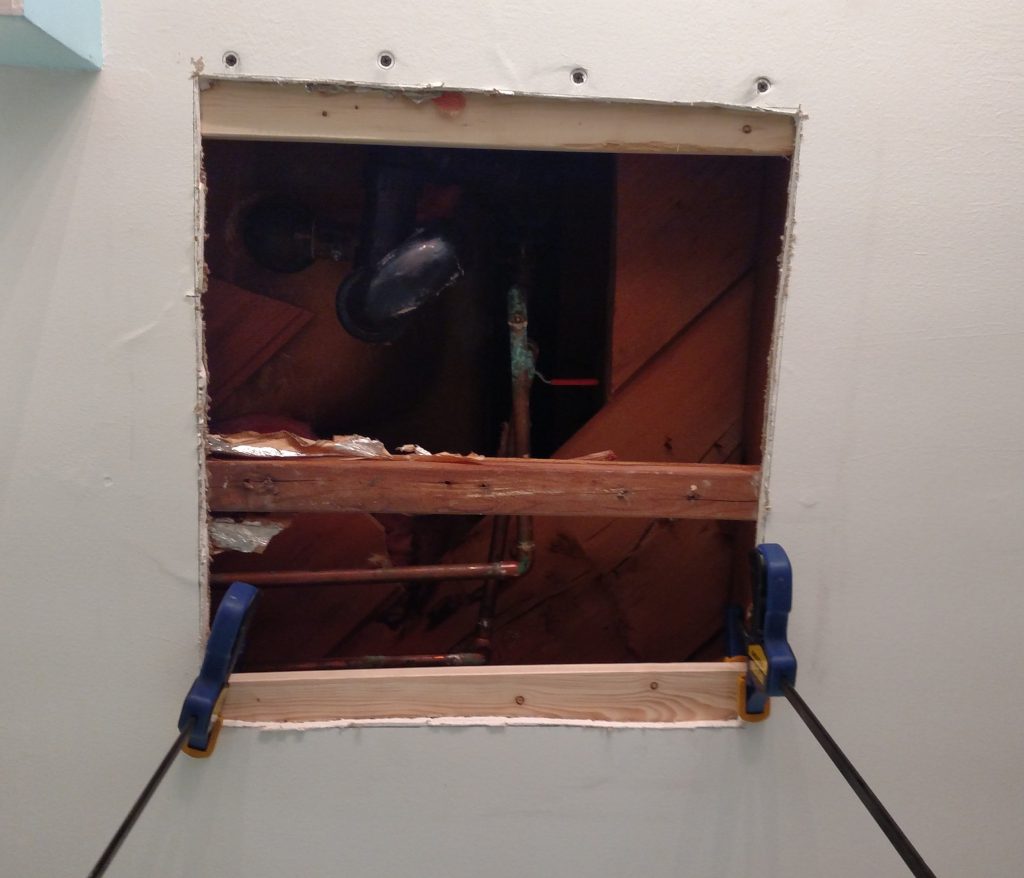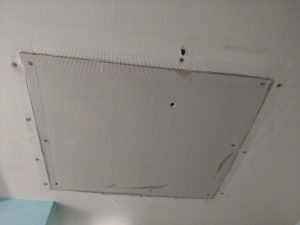As a homeowner, it can sometimes be helpful to know how to repair drywall yourself. The primary reasons for this could be damage incurred while moving furniture, replacement of a window or door, cutting current drywall for a new light fixture, etc. Then there are more pressing needs such as water damage from an adjacent room, window left open, or other less desirable reasons.
If you choose to do drywall repair or replacement yourself, rest assured it is a simple and inexpensive project – for a small area (under 8 square feet) you will likely need only about $20 in supplies, plus whatever paint you choose to finish the job with. In this blog entry we’ll talk about what you need and how to do it. All you need is a little time, patience and a little attention to detail.
Tools Needed:
- Utility knife with a fresh blade
- Joint and taping knives (I prefer a 6 inch and a 12 inch for most jobs)
- Sand paper (120 to 150-grit or drywall paper is best)
- Rag or sponge
- Saw for removing damaged gypsum (this can be as basic as a “jab saw” or a power tool such as an oscillating multi-tool)
Supplies Needed
- Pre-Mixed Joint Compound (1.75 pt should cover about 20 Square feet, or a 4×5 foot patch)
- Joint tape (I prefer Fibal type tape)
- Handi-Panel or sheetrock (gypsum) panel – You can buy these as 2×2 feet or standard 4×8 foot and cut as needed.
- Wood for anchoring or drywall repair clips
Preparation and Demolition
Before starting, it’s a good idea to close off the space you will be working on and remove or cover anything you don’t want to get dusty or dirty. Cover the floor you will be working on with poly or a another covering such as a drop cloth or old sheet. In this example, the drywall being replaced is from a ceiling below a bath tub where the fixture was leaking behind the valve, so some of the drywall that came down was damp. Dust from sanding will also be an issue if not properly managed.
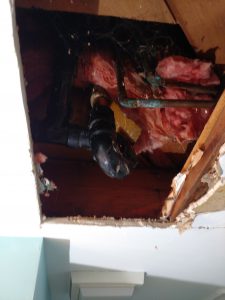
The section of drywall removed here was damaged due to a leaky bath tub faucet above. Notice the p-trap and copper piping; small amounts of water were able to drip from the faucet and damage this section.
- Determine the section to cut and mark it out using a straight edge ruler or square.
- Cut away the damaged section of drywall. I chose to do this with an oscillating multi-tool with a cutting head). Take care to cut as cleanly as possible, but don’t overthink it; you can patch small errors with ease.
- Inspect the area remaining – cut as necessary to remove any damaged parts (especially water damage)
- If your cut is close to a stud or nailer, but does not expose it, consider cutting a little further so you have a good surface to fasten the new panel to.
- Measure the thickness or depth of the existing gypsum board as well as the size of your newly formed hole.
Gypsum comes in four thicknesses in most homes:
– 1/4″ – generally used in curved applications, it is not common but may exist in some homes and is available but hard to find at most stores.
– 3/8″ – more common in older homes and widely available at most home supply stores.
– 1/2″ – This would be considered the most standard thickness and is widely available.
– 5/8″ – Usually found in ceilings, and often of a fire resistant form. This is less likely to be found at a home supply store, and more likely in a drywall supply store. - Ensure that the hole either has exposed studs or nailers, or you can
- With the new panel in hand, take time to re-measure the opening you need to fill. Fitting the new piece is easiest if you cut straight lines, and a tighter fit will be achieved. A gap is okay, but try to keep any gaps less than 1/4″ (less is better). Mark your cuts before hand
- There are two ways to affix the new panel – Here I have screwed a strip of wood on either side of the opening to secure the panel to; the other option is to use Drywall repair clips – allowing you to anchor a screw into the existing drywall without a more substantial support.
- To cut the new panel, place a straight edge against your line and score it with a utility knife. With the scrap edge hanging over a flat surface just beyond your score, quickly snap the piece downward to break the gypsum. Flip over your panel and cut the backing paper to remove the excess. Do this for all sides to be cut. (Pictures below)
- Check the fit and trim excess away with the utility knife or by shaving the surface with the knife perpendicular to the edge.
- Mark your lines using a pencil or felt tip marker.
- Cut along your marks using a sharp utility knife
- When scoring, cut the paper, but not to deep into the drywall as this will dull your blade
- Snap the piece downard along the score line and revers to cut free of the paper backing.
- Anchor the wood strips to attach the new panel if using.
- Attach the new panel with drywall screws (keep in mind that fewer screws will mean less patching with mud, but too few may not be secure. Aim for one screw on each corner, plus another every foot)
- Apply tape to the seam and begin mudding your drywall. I cannot do better than to recommend this video as it truly is an art form.
Points to remember when mudding joints
- Less is more – do not apply too much mud, or over work it.
- Aim for 2-3 coats ideally.
- Blend joints by extending past by 6-8 inches.
- Clean your tools in between and ensure they are dry.
- Use a flashlight shined along the wall’s surface to detect irregularities.
Finishing
When you are satisfied with your joints, apply a coat of primer or your first coat of paint. At this time if you discover any imperfections, dips or divots, you can still add a small amount of joint compound and sand to correct before painting. Congratulations, you’ve completed your first drywall repair!

